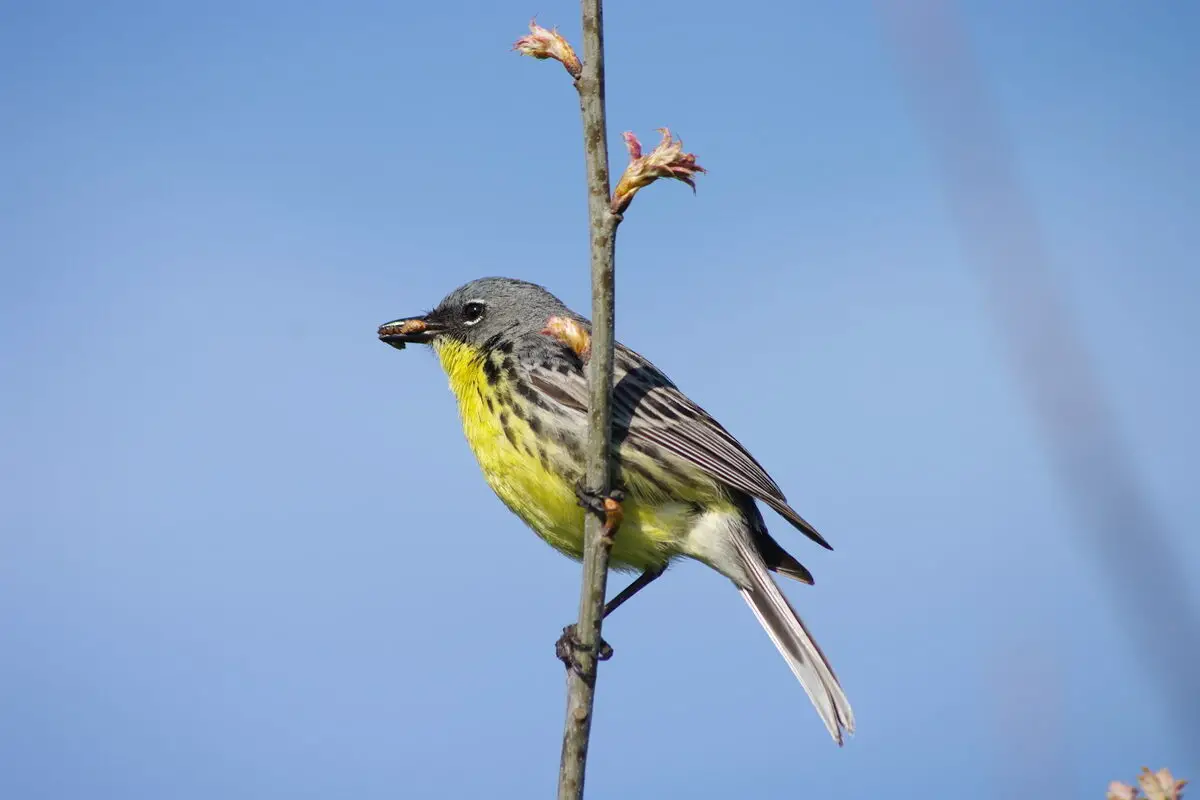Michigan’s rare songbird falls below recovery target, prompting new habitat strategy from state and federal agencies. The Kirtland Warbler decline in breeding pairs has dropped below safe thresholds, triggering intensified conservation action across Michigan’s jack pine forests.
Federal and State Wildlife Teams Shift Strategy to Save Iconic Michigan Songbird
The Kirtland’s warbler, a conservation success story turned cautionary tale, is again facing a steep population decline. A newly released 2025 census by the Kirtland’s Warbler Conservation Team reports only 1,489 breeding pairs globally, down from 2,245 in 2021—a 34% decrease. Of these, 1,477 pairs reside in Michigan, underscoring the state’s critical role in the bird’s survival.
The sharp decline threatens to reverse decades of progress in recovery. “This is a situation we’ve been monitoring and addressing for several years,” said Erin Victory, a wildlife biologist with the Michigan Department of Natural Resources (DNR). “We anticipated a decline in the population and have been taking action to address it.”
Michigan’s Jack Pine Strategy Falters Under Forest Age Imbalance
The root cause is structural: a mismatch in forest age classes. The Kirtland’s warbler relies almost exclusively on young jack pine stands aged 6–20 years to breed. But decades of habitat creation have produced forests that are now too mature to support the bird. Nearly all of Michigan’s jack pine habitat is now 30–40 years old—too old for nesting, and not yet commercially viable for clearcutting.
“The problem is simple: we don’t have enough young forest,” said Jason Hartman, silvicultural specialist for the DNR. “And we can’t harvest what we need because the stands aren’t ready.”
To correct this, the conservation team is overhauling its strategy. A 10-year Breeding Range Conservation Plan will adjust timber harvesting to target stands in the 20–30-year age class—cutting them early for biomass or mulch—to regenerate the young pine habitat the warblers require. Prescribed fire is also being reconsidered as a tool to emulate natural wildfire patterns.
Michigan’s Habitat Management Effort Is a Model of Collaboration
The Kirtland’s Warbler Conservation Team includes the Michigan DNR, U.S. Fish and Wildlife Service, U.S. Forest Service, Wisconsin DNR, and non-profit partners such as the American Bird Conservancy and Huron Pines.
“We already understand the principal cause, and conservation team members are taking steps to address the issue,” said Steve Roels, program director at the American Bird Conservancy.
Surveys conducted in Michigan from June 6–26 show the vast majority of warbler pairs in the northern Lower Peninsula:
- 814 pairs on DNR-managed lands
- 597 pairs on U.S. Forest Service lands
- 49 pairs in the Upper Peninsula
- 17 pairs on Forest Service land in the Upper Peninsula
Only 12 pairs were found in Wisconsin, with Ontario’s count pending.
Climate and Cowbirds Pose Additional Reasons for Kirtland Warbler Decline
Uncontrollable variables such as extreme weather and parasitic birds further complicate recovery. Victory cited a 2023 hailstorm that destroyed half of the jack pine seedlings meant for planting. Meanwhile, cowbirds—a known nest parasite—lay eggs in warbler nests, leading to chick deaths.
The conservation team is also working with universities to study new habitat strategies and is reconsidering jack pine plantations in favor of natural regeneration where possible.
“The strength of the management lies in the collective efforts,” said Phil Huber, chair of the conservation team. “We are confident this group will continue to do what is necessary.”
A Michigan Success Story Still Dependent on Human Intervention
The Kirtland’s warbler was delisted from the federal endangered species list in 2019 after rebounding from fewer than 200 pairs in the 1970s. Yet the bird remains state-listed as “threatened” in Michigan and is considered “conservation-reliant,” meaning ongoing management is essential.
Most of the global population nests in a 10-county corridor between Grayling and Oscoda, making Michigan ground zero for the species’ future.
Victory acknowledged that upcoming surveys might show further declines, possibly below the 1,000-pair conservation threshold. “But we are confident the population will rebound,” she said.
Read More Interesting Feature Stories From ThumbWind
- Michigan Feature News Stories – Unveiling the diverse and vibrant people, captivating places, and remarkable events that come together to make the Great Lake State unique.
- Strange Political News – A sarcastic take on official news from around the U.S., exploring the absurdities that often arise in the political landscape while providing a humorous perspective on current events and highlighting the quirks of politicians and policies.
- Michigan Hometown News – News and events from Michigan’s Upper Thumb region worth knowing, including local stories, impactful interviews, and updates on community happenings that shape the culture and lifestyle of the area.
Your Turn – Like This, or Hate it – We Want To Hear From You
Please offer an insightful and thoughtful comment. We review each response. Follow us to have other feature stories fill up your email box, or check us out at ThumbWind News.




